WORKING WITH ASTEROID ASTROLOGY
I have been working with asteroid astrology since 2006 when Pluto was demoted. Astronomers reclassified him as a Dwarf Planet. Ceres was promoted in the same year, from her former asteroid status, and became his equal – a dwarf planet. Working with Pluto and Ceres without the asteroid Proserpina seemed illogical. As Pluto’s wife and Ceres’ daughter, Proserpina (asteroid 26) was a key symbol. Thus I began testing asteroids in the chart. They work in both birth chart (personality analysis) and prediction astrology, just as powerfully as planets do. The statues and paintings the Romans have left us, of the various gods and goddesses who give their names to these asteroids, speak to us across 2000 years of history. This is Bacchus (below) who is the god lending his name to an asteroid which is all about pure, escapist, hedonism. Total pleasure. If you don’t know Bacchus in your own chart, then you should. He is about life’s natural and unnatural highs. By sign and house in your chart, the asteroid Bacchus shows where you make people very happy – ecstatic in fact – but also where you can enjoy yourself the most. Bacchus matters!
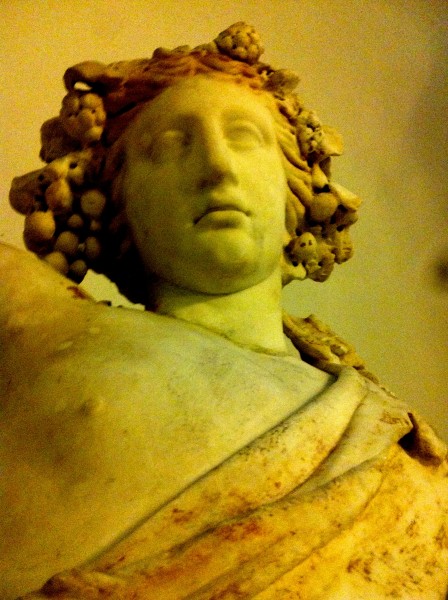
Asteroids named after Roman/Latin archetypes are in your personal birth chart for premium members on this website, so that you can complete the family tree of your astrology. By this, I mean that not only can you work with Pluto’s wife Proserpina, but also Jupiter’s wife Juno. Astrology is Roman/Latin in origin so for the sake of consistency you can ignore Pallas Athene (Greek) and Sedna (Icelandic). There is tremendous confusion about asteroids in astrology, with Greek gods strangely mixed up with Romans – but keep it Latin and the system works. Pallas Athene, for example, is the forerunner of Minerva. So cast your horoscopes with Minerva rather than with her early Greek version.
TESTING ASTEROIDS
I began testing asteroids for their accuracy in the natal charts of well-known people nine years ago. My first discovery was Psyche (the daughter-in-law of Venus) and her role in Carl Jung’s chart. Of course he popularised the term psyche in modern psychology – but Psyche is also in a precise square to Saturn in his chart. This kind of synchronicity inspired me to continue asteroid research. Now, I use Psyche all the time. When you begin using Roman Asteroid Astrology, the symbols for the asteroids gods and goddesses (or the statues themselves, or the art) will appear with striking meaning. Psyche is represented by the butterfly. These butterflies were photographed in Paris in the summer of 2014 as I began writing a book on her, for the new 2015 series, Modern Astrology. Why is Psyche shown by a butterfly? Because it is a cipher for transformation. You depart one state, the chrysalis, to become quite another. The Romans believed butterflies hovered about the mouths of dying people as their souls departed for eternity. Psyche lived forever in Italian mythology. In your chart, she shows how you will endure, and why.

HOW ASTROLOGERS TEST THE MEANING OF NEW HEAVENLY BODIES
It is unusual to find a new planet and any discovery is a rare and striking event. A planet’s meaning is decoded by finding other rare events in the same year too. In 1781 when Uranus was found, for example, the American revolution succeeded. In myth, Uranus was the victim of a revolution by Saturn so a meaning emerged. I use the same method to test asteroids – discovery year, myth and key events. So can you. Spot synchronicity and work with it. What is it about the year of discovery, for a particular asteroid, which echoes the myth? Even though the two events may be thousands of years apart? Take that idea and see if it is supported by your astrological chart. Astrology runs on synchronicity. So do asteroids.

THE INNER LOGIC OF ASTROLOGY
Like the Tarot and the I Ching, astrology also has its own inner logic – a system. That system is based on Roman/Latin family tree of gods, derived from Greece. It begins with Uranus who is the father of Saturn. In turn he is Jupiter’s father. Jupiter has two brothers, Neptune and Pluto and thus the tree grows. Neptune has a wife and her name is Salacia. Pluto has a wife and her name is Proserpina. Proserpina has a mother and her name is Ceres. Asteroids complete the gaps in the bloodlines if they bear Roman/Latin names. Astrology has become tremendously confused with Greek or Icelandic gods and goddesses in the mix, yet it’s so simple – it’s based on Mercury not Hermes. Venus, not Aphrodite. Mars, not Ares. Jupiter, not Zeus. Saturn, not Chronos. Uranus, not Ouranos. Neptune, not Poseidon. Pluto, not Hades. It is logical and astrological.
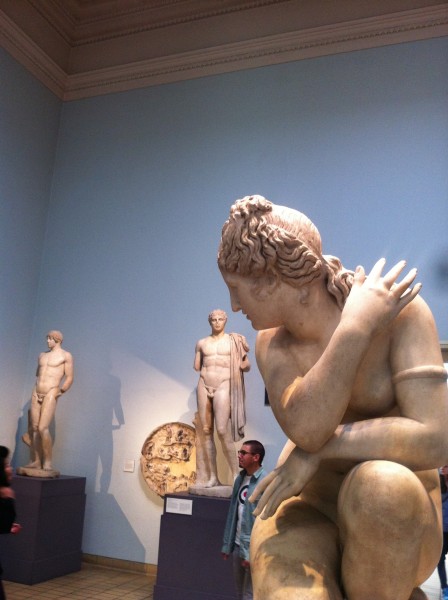
ASTEROIDS AND THE ASTROLOGICAL FAMILY TREE
It is unusual to find a new asteroid which suits the inner logic of our astrology. There are millions of asteroids of course; some are named after Monty Python. When an asteroid is given the name of a Roman god by astronomers it’s striking. As with planets, astrologers look for rare events in the same year to find omens. Ceres, for example (now a dwarf planet) emerged in a strangely appropriate year. Within 12 months of her discovery and naming, in 1801, The Four Seasons was released. Ceres, of course, ruled Summer, Autumn, Winter and Spring in Roman myth. In your chart, Ceres is about accepting seasonal change in your life. The warm and abundant months as well as the colder, quieter months. She was the goddess of wheat and corn (always shown with a sheaf in her hand) so the seasons belonged to her as a consequence. And power.
WHY CERES CHANGED ASTROLOGY FOREVER
Ceres has changed our astrology forever after her elevation and Pluto’s demise. Since 2006 Pluto has been dwarfed but if we wish to retain him, we must use her. Astrologers cannot cling onto one dwarf planet as a symbol and ignore the other. I am speaking on behalf of Ceres here, because she wishes to be taken seriously. Ceres-ly. In fact, she is asteroid 1 in your chart, and always wanted to be number one, instead of Pluto, her bossy son-in-law! Ceres, in myth, is a symbol of the ‘dwarfing’ or demotion of Pluto, by Jupiter. In her power struggle with Pluto, Ceres relegated him and elevated herself. Do use Ceres in your horoscope by transit and natally and you will soon see her emerge. She is as much about great power and entitlement, as she is about necessary loss and adjustment. After the loss, new episodes in your life will always begin.
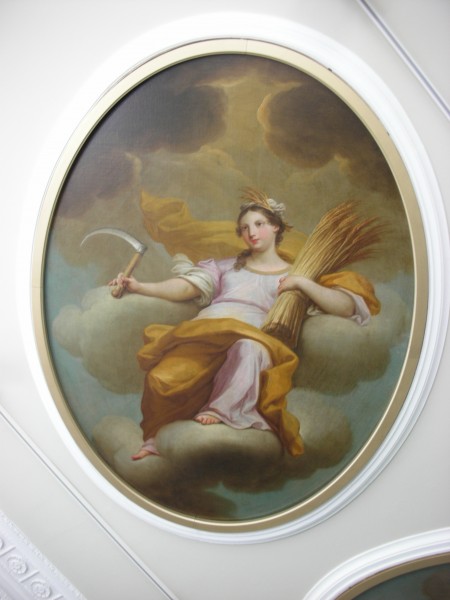
THE SYNCHRONICITY OF CERES
The synchronicity surrounding Ceres is a good example of how astrology works. She was classified as a planet, then demoted to asteroid and finally promoted. Ceres’ status among astronomers echoes the myth about power, loss and sharing. Since 2006 she shares the same status, in astronomy, as her son-in-law Pluto. Thus the story of Ceres herself, provides the narrative for the symbol. If you are dealing with loss, rage and/or depression in a horoscope, either natally or by transit, and cannot find indicators, you are probably ignoring Ceres. Look there first. Sometimes the Roman myths can manifest literally in charts, so if you have a woman whose daughter has acquired a new boyfriend or husband, and this woman is also suffering from low mood or sustained anger – begin by looking at Ceres, Pluto and Proserpina in her natal chart. Beyond the literal, though, Ceres teaches us about where we must learn to compromise and co-create new chapters with others, during transits to Ceres.
THE DISCOVERY OF CERES
Ceres was found on 1st January 1801 by Giuseppe Piazzi in Palermo, a city in Italy. She was named after the goddess of the four seasons ruling Roman agriculture. When Pluto took Proserpina, Ceres mourned and the four seasons ceased. Permanent winter ruled the planet, crops failed and the people began to starve. When Ceres regained Proserpina for half the year, spring and summer returned. There is a rhythmic, seasonal quality to Ceres in your chart which will faithfully describe the myth – a certain ownership or possession in life – followed by a deep change in the balance of power – and a tremendous surge in emotion. This is always followed by transformation. Classically in astrology, stargazers have given this transformation over to Pluto, but they have ignored Ceres and Proserpina’s part in the change. These two goddesses engineered it. If you want to fill out your understanding of Pluto, his wife and mother-in-law, remember he was found in 1930, ahead of the Second World War and the United Nations which followed. This carving-up of the world is the perfect analogy for the Pluto, Ceres and Proserpina story.
CERES AND THE SEASONS
The discovery of Ceres in 1801 was a striking event, as was a new Haydn oratorio. He called it The Seasons and it premiered three months after Ceres was found. Haydn’s patron on the project became drawn into a power struggle with him. James Thomson’s famous poem of the same name also saw power struggles. The legal decisions which resulted were crucial to copyright law development. Where is Ceres in your chart? As you can see below in this painting by Callet, she is a cipher for deep emotion in the horoscope. This is her reaction to Jupiter (left) when the supreme God, failed to stop his brother Pluto from abucting her precious daughter Proserpina. As a result of this, the four seasons froze.
CERES AS AN EXAMPLE OF ASTEROID WORK
Ceres, the symbol which has been planet, asteroid and dwarf planet at different times, is a very good example of why asteroid work matters to astrology. Astronomers have a habit of reclassifying our heavenly bodies. And also discovering new ones. Vesta, Saturn’s daughter, is the most recent example of an asteroid which became a baby planet. Shouldn’t astrologers work with them all? You won’t really have a full picture of astrology if you continue to leave Ceres out of your horoscopes. She’s there for a reason. And she can give you so much missing information. If we are to faithfully stick to the Astrological Method which our predecessors began using with Uranus, Neptune and Pluto, then we should certainly be applying it to new astronomical discoveries, or reclassifications, which fit the model. And Ceres should now be in every chart.
THE BENEFITS OF USING ROMAN ASTEROIDS
Using the complete family tree of Roman/Latin named asteroids, dwarf planets and other heavenly bodies, like Neptune’s wife Salacia (a trans-Neptunian) helps you create a more consistent, whole astrology. Finally, you’re using the whole family and not just selected gods, goddesses or archetypes. Doing this deepens and enriches your understanding of, say, Pluto. His wife defines his identity. You may never really know Pluto in your horoscope, natally or by transit, until you have seen how his wife Proserpina and mother-in-law Ceres operate as well. They’re crucial. Similarly, your understanding of Saturn will expand hugely once you work with his wife Ops and his daughter Vesta. They reveal Saturn.
NARROW ORBS
Using more heavenly bodies in the horoscope also means you can use narrow orbs, using no more than zero through one degree to identify aspects. Try it on your own natal chart and see what happens. You will retain some features and lose others – yet gain a lot more intriguing patterns. Using precise orbs also creates precise sacred geometry in your horoscope – perfect trines or squares. It fits astrology into the world. Sacred geometry – the remarkably symmetrical patterns which occur in nature, and in religious architecture, depends on precise calculations. When you begin adding Roman Asteroids to your horoscopes, the need for large, variable orbs (up to nine degrees) vanishes, along with the rather sloppy look of your chart. Suddenly you will see your horoscope in perfect pyramids or symmetrical squares and watch it come alive in a new way. Amazing shapes like the Vesica Piscis can be found when two horoscopes are read in overlapping form, with matching conjunctions.

SYNCHRONICITY, SYMBOLS AND ASTEROIDS
In my work at The Astrological Lodge of London and Sydney Astrological Research Society I’ve found that the asteroid symbols leap into life with staggering synchronicity, for every audience I speak to. Minerva is represented by the owl. After one talk in Australia, a woman who had an exact Minerva-Sun conjunction showed me her owl tattoo. She had not known the symbolism at all before ordering the tattoo. As with Psyche, mentioned previously (who often turns up with butterflies) there are symbols for many of the asteroids. Aesculapius is represented by a snake. I found this magazine in a Paris bookshop on the same day that a good friend, a traditional astrologer, told me she was fighting her breast cancer. She won. (Aesculapius is the ancient Roman god of supreme healing who had the reputation for being able to bring people back from the brink of serious illness). It is amazing how often snakes, or the actual snake/staff symbol of Aesculapius, occur with this asteroid.
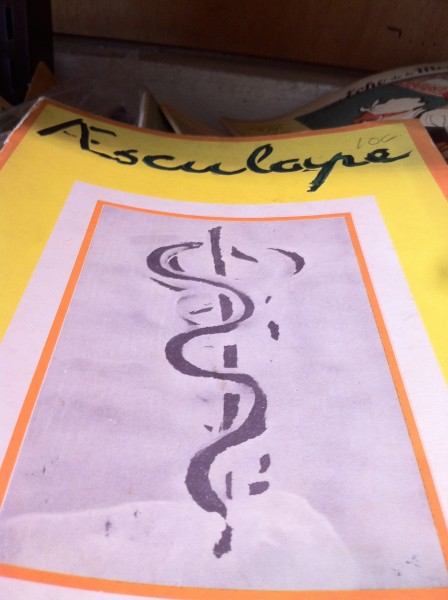
FEMINISM AND ASTEROIDS
Until the reintroduction of the Roman/Latin asteroids to astrology, only two female archetypes existed – the doting mother (The Moon) and the adulterous wife and jealous mother(Venus). Thanks to the asteroids and other bodies, we now have new female archetypes like Minerva (female wisdom and knowledge) and Diana (single, child-free, women). Roman Asteroids give us feminine symbols not defined by their relationship to men. Astrology has always moved with the times. If it is to accurately reflect 21st century life then it must incorporate feminist principles and, naturally, the asteroids who describe women in their own right. Most of the civilised world gave women the vote back in the 20th century but strangely, the astrological establishment still fails to give Psyche, Juno, Minerva, Diana, Fortuna, Ops, Vesta, Salacia, Ceres and Proserpina the vote. Of these symbols, Jupiter’s three celebrated daughters, the asteroids Minerva, Diana and Fortuna exist independently of men. In a male chart, these powerfully feminine principles can also reveal a man’s female side, increasing his self-knowledge and expanding his freedom.
GAY, BISEXUAL, LESBIAN AND TRANSGENDER ASTROLOGY
The Romans had a rich and diverse sexuality, embracing gay, bisexual, lesbian and transgender people. Apollo’s bisexual passion for Hyacinth is well-known. Apollo is also an important Roman/Latin asteroid in the horoscope. Beyond those literal interpretations of symbols, increasing astrology’s vocabulary beyond Father (Sun) and Mother (Moon) makes it fully inclusive of other relationships not dependent on reproduction. Diana, for example (sister of Apollo) was mostly single, and certainly child-free, apart from a few romantic passions. She spent most of her time in the company of her girlfriends, the nymphs. Bacchus was clearly not interested in a white picket fence, 2.5 children and marriage; his sexuality was far-roaming, much like a modern rock star. Cupid was all about short-term desire. Proserpina was about sexuality as power.
GLOSSARY OF ROMAN HEAVENLY BODIES
These Roman/Latin archetypes complete the family tree of modern astrology. You can find in your birth chart right here on this site.
Cupido (Cupido)
Son of Venus, husband of Psyche. Symbol of desire and short-term passion.
Psyche
Wife of Cupid, daughter-in-law of Venus. Symbol of what is eternal, immortal.
Vulcan (Vulcanus)
Husband of Venus. Symbol of tightly controlled anger and desire; restrained fire.
Juno
Wife of Jupiter. Symbol of commitment and the loss of freedom/gain in security.
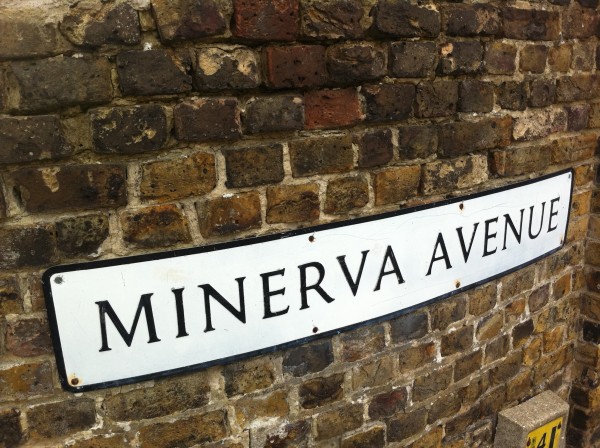
Fortuna
Daughter of Jupiter. Symbol of fortune. Highs become lows and vice versa.
Minerva
Daughter of Jupiter. Wise and all-knowing. A symbol of deep intelligence.
Diana
Daughter of Jupiter. Child-free and marriage-free. A symbol of independence.
Apollo
Son of Jupiter. Symbol of leadership. One of the few gay gods in Ancient Rome.
Bacchus
Son of Jupiter. Symbol of the pure pleasure principle. Hedonism and indulgence.
Aesculapius
Grandson of Jupiter. Symbol of rescue, resurrection, rebirth. The ultimate healer.
Hygeia
Great-granddaughter of Jupiter. Symbol of prevention being better than cure.
Panacea
Great-granddaughter of Jupiter. Symbol of the ethical issues around all cures.
Ops
Wife of Saturn, mother of Jupiter. Symbol of hope and happy endings after pain.
Vesta
Daughter of Saturn. Symbol of one male/many female ‘harem’ scenarios.
Salacia
Wife of Neptune. Found in the year of the Asian Tsunami. Similar to Neptune.
Ceres
Pluto’s mother-in-law. Symbol of power struggles and compromises in control.
Proserpina
Pluto’s wife. Symbol of go-between status, bridging powerful people/entities.
For permission to reproduce this article please contact @jessicacadams on Twitter.


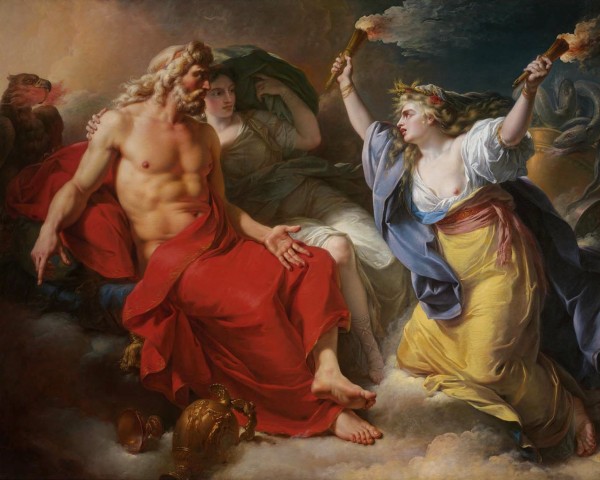
Thanks for the info on asteroids Jessica! Very interesting! Cheers. :-)
Thanks Lee.
Thank you jessicca for a great article. Will be taking a closer look at how these asteroids work in my chart. Have identified many cycles and transits coinciding with events already. Fascinating. Happy new year, thanks again for all your hard work which I love and value.
Thank you very much. The asteroids are amazingly accurate, I hope you can recreate your chart with them.
Love your predictions Jessica, And waits eagerly for your weekly predictions every week. And this article shows why your predictions are bang on. Cheers
Thank you very much Vishal.
These feminine archetypes round out my psyche’s secrets and foretell my predispositions. My 7th house Sun4Sag is CONJ Diana13 and Prosperpina12. Sisyphus4Sag CONJ Desc4Sag. Minerva8Sag CONJ Mer9Sag. After 4 marriages, intentionally child-free & most independent, I AM my asteroids. Don’t you just LOVE the divine mysticism of astrology? Cheers!
Diana is a great archetype for women and a true alternative to the Moon and Venus which we were stuck with in 20th century astrology!
Hi, Jessica: This is a great article. I’ve been studying astrology for years, but only recently, in the past couple months, started paying attention to all of these asteroids.
I wonder what your thoughts are on these two issues:
1. Psyche going retrograde conjunct natal Sappho at 23 Gemini
2. Psyche opposite Jupiter in synastry
3. Aesculapius transit natal Pluto at 19 Libra
Likewise, if one’s Cupido is conjunct another’s Sun/Sappho conjunction, would that be like Cupid being taken by surprise at his own attraction to his target?
I’ve always loved Greek mythology, and reading about the asteroids is fascinating when looking at relationships.
Thank you. First up – not sure why you are using Sappho? She is not part of the Roman/Latin family tree of astrology. Greek mythology is the forerunner of Roman mythology and it’s the latter which gives us modern astrology. Aesculapia conjunct natal Pluto at 19 Libra? That is the revival or resurrection of a relationship you had assumed was finished. Or, alternatively, a conflict you had thought was nearly over. Take your time with this – it may not be until the final week of October that you have all the facts.
LOL! Sorry Jessica: I get the Greeks and Romans mixed up.
However, I use Sappho because of her influence in the two charts. She stood out because of the conjunctions I mentioned, as does Psyche, when talking about relationships.
Your timing also makes sense in light of the retrogrades going direct at the end of October early November.
Great discussion, Jessica, thanks.
Tom
Thank you. Try working exclusively with the Roman/Latin family tree of astrology. It’s like working with a Tarot deck and introducing regular playing cards if you mix Greek/Roman. Psyche will show up, though.
Fascinating–you are one of the rare and precious sources when it comes to Asteroid astrology, Jessica. I do have a question: what does it generally entail when an asteroid is flat on an ascendant in relationship astrology? Like in my example, when a love interest’s Psyche is on my ascendant.
Thank you very much. If your lover’s Psyche is on your Ascendant then your image, reputation and profile (which is often coloured by being single or having a particular partner) is very much influenced by the other person. In other words, that secret question ‘What is he/she doing for my image?’ is always there. I am sure there are other chart factors between you, though. If you are in love, it would be unusual if there were not.
I’m in love and he says “Not so fast”. Incredible physical connection. Capricorn male/Pisces female. His Eros, Sun and Mercury conjunct my Psyche & Ceres, my Eros opposite his Psyche. His ASC on my Cupid, his North Node on my Vesta.
Those asteroids will tell you a lot about this man, but I am not sure why you are using Eros as he is Greek, not Roman.
Forget the Eros then ;) Is there a source where I can look deeper? Or do you mind giving me some hints? Like my Cupid on his ASC. In Scorpio.
Love and sex is best examined by lining up both charts to find out where the conjunctions are. Zero orb, exact conjunctions tell you what is gluing two people together and why. They can be quite astonishing.
Also, when his Vesta is like 4 degrees from his Ascendent, it is very likely that he is into “harem scenarios”–correct? Thank you <3
No, that’s not a Vesta conjunction. Four degrees is too wide. It sounds as if something else is going on with this man’s horoscope!
Hi Jessica, after reading your wonderful article I was looking up asteroids in my natal chart and I discovered that Diana is exactly conjunct my North Node to the minute at 12 27′ degrees Pisces in the 11th house. She is retrograde. I see she is a female archetype that represents being single and childless, however I am married and want to have at least one child within the next few years. How would you interpret her conjunct my North Node? Thank you for your insights!
Actually, Diana is conjunct your North Node at 12 Pisces in your Twelfth House. (Natural House System). The Twelfth House rules the unconscious mind, the secrets you keep and the way you operate behind the scenes. There is a part of you which is quite unconscious, perhaps only revealed in dreams, which wants to be child-free and marriage-free. Because you consciously want to have a child, we would have to say that this other side of you have been completely buried. It is also a past life issue. The North Node rules your karma from other lifetimes. Tune into your dreams as they will often symbolise this unconscious need to be free of husbands and children!
Hi this is a Longshot but do you do close reading of natal charts? I am looking for specific info that may indicate same sex attraction and while I have studied astrology as a hobby, I have heard both Mars and venus play a role as well as asteroid sappho. Any insight? Thanks
There is nothing in astrology to show same sex attraction as an over-riding rule -thank you.
Hi Jessica, I find your website full of information and get a lot of insights about myself. Thank you!! I have a question: What does it mean when I had a triple conjunction Psyche MC Cupid on 14 degree Leo, in my natal chart? Also have Venus conj.Sun conj, Eros in 10 in Virgo 5 degree.For Virgo stelium I know what it mean fell it, live it. But have no idea what Psyche with Cupid and MC mean..there are no full degree apart. Best wishes!!
It’s really hard to read this without the full chart in front of me, as to take it out of context means a mis-reading. I don’t use Eros because he is Greek, not Roman. I think you should just download my new ebook 2020 Astrology, free, from this website as a first step. I wrote it for people who are not Premium Members who want to find out more about how I practise astrology. There is information there on Cupido/Cupid.
Hi Jessica – really interesting. i seem to have a big day coming up – 5 February. My Pluto at 18 Cap in my seventh house is conjunct Salacia and Panacea – all directly opposite my Venus 18 Cancer. It sounds powerful – but hopefully in a good way??? I would interested in your views. Thanks always.
You have Salacia at 18 Capricorn in your Tenth House of career, unpaid work and university life – opposite Venus at 18 Cancer in your Fourth House of home, family, roots, origins, home town, household, property and homeland. These Capricorn/Cancer themes bounce off each other in your horoscope. It is very common in the charts of people who have to juggle choices about success, status, ambition with their loyalties to where they come from, or the family they come from. Pluto’s transit through your Tenth House (since 2008) has intensified the message, so you do have a fork in the road here, about making it to the top of the mountain – or cleaving towards your foundations. There is a creative solution.
Thank you Jessica – but I thought Pluto was in my 7th? My midheaven is in Pisces – and venus is in my natal first house – conjunct my ascendant?
In the Natural House System you have Pluto in Virgo in your Sixth. Venus is in Cancer in your Fourth House and your MC is in your Twelfth House. You will feel Pluto in your Sixth most, during your lifetime, as your career will go through at least two massive transitions (switching industries or professions). You will also go through extremes, being at the very top, then having to hand over your power, for a while. It is very likely with this placement that you also have control and self-control issues about food, drink, drugs, doctors, healers, fitness and the rest. All of this should have been more obvious to you in 2016 when Jupiter was also passing through Virgo and your Sixth House.
Wow! Thanks Jessica – it makes a lot of sense!